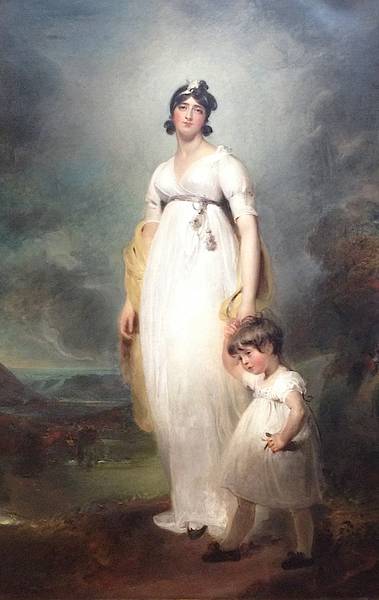This picture shows a likeness by the English portraitist Sir Thomas Lawrence of Amelia Angerstein and her son John Julius. There are two things that are significant about it. Firstly, the picture was taken on a telephone, in the Musée d’Art et d’Histoire in Geneva and no one bustled up to try and stop me: photography is allowed. Secondly, the little boy in the painting is the grandson of the Russian-born insurance broker John Julius Angerstein (buried in Greenwich), whose collection of Old Master paintings was purchased by the British government in 1824 to form the core of the new National Gallery in London.

And that same National Gallery has just announced that it is to allow visitors to take photographs of its artworks. Bravo the National Gallery!
The announcement hasn’t been greeted with such delight by everyone. A recent article in the Telegraph deplores the move, arguing that taking photos of paintings is a shallow consumerist response that fails to engage with the works of art in a contemplative, comprehending way. I disagree. Ruskin sketched what delighted him. Poets in the past attempted to translate captivating scenes into words. The human impulse to capture lovely things fleetingly experienced, like butterflies in a net, is extremely strong. The motive may simply be to take them home to enjoy them at leisure. Or perhaps to use them in some way to instruct others, to increase the sum of human knowledge and understanding. Nowadays we don’t use pen and ink or Pindaric periods; we use our smartphones. Being allowed to do so gives huge satisfaction to huge numbers of people. I am one of them.
The Telegraph article objects that if we want an image to take home, there are postcards in the gallery shop. What rot! I can’t use a postcard as my screensaver or tweet it in instant excitement to my followers. And nowadays, that is what people want to do with their images. Why shouldn’t they? Besides, there aren’t always postcards in the shop of the particular artwork that you want. Of if there are, the colour reproduction is so bad that it bears little resemblance to the original. Or it’s a zoomed-out reproduction of the whole thing whereas what you wanted was a zoomed-in shot of a tiny detail. Or all sorts of reasons why postcards aren’t the answer.
Postcards, also, are a commercial product. Before Wikicommons and public photography policies came along, that was the only access we had: postcards from the shop or a digital reproduction from an expensive image agency. Is that really the kind of relationship with art that the great founding fathers of our public collections wanted to foster? When Sir George Beaumont offered his collection to the nation on condition that the government also buy the Angerstein pictures, is that what he had in mind? A relationship between the country and its art that necessarily involves a cash transaction? I don’t think so. Freely available means freely available. So if I want to take a photograph, please don’t sniff as if I were a member of some grunt underclass of great unwashed, unable to respond to art on a cerebral level. If the hoi polloi want to take selfies in front of Sebastiano del Piombo’s Raising of Lazarus (National Gallery accession number NG1; its first ever painting), then good for them!
The National Gallery, John Julius Angerstein, Greenwich and much more besides, are covered in detail in Blue Guide London.






